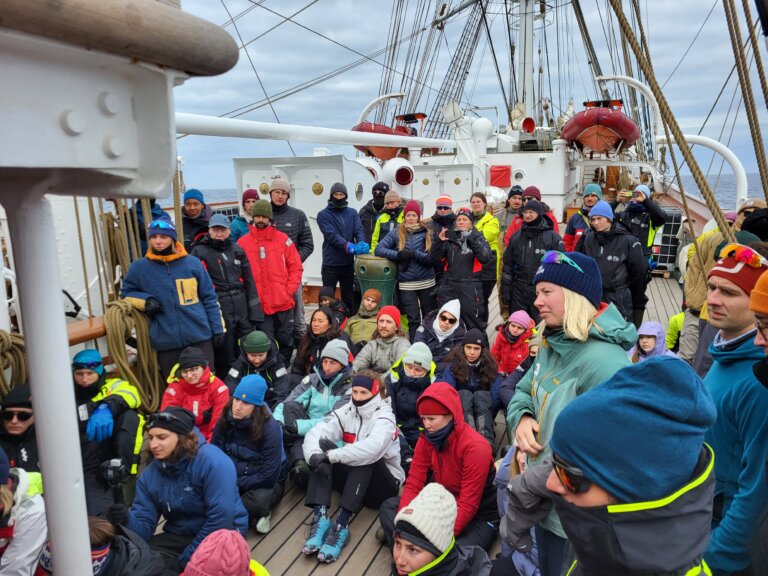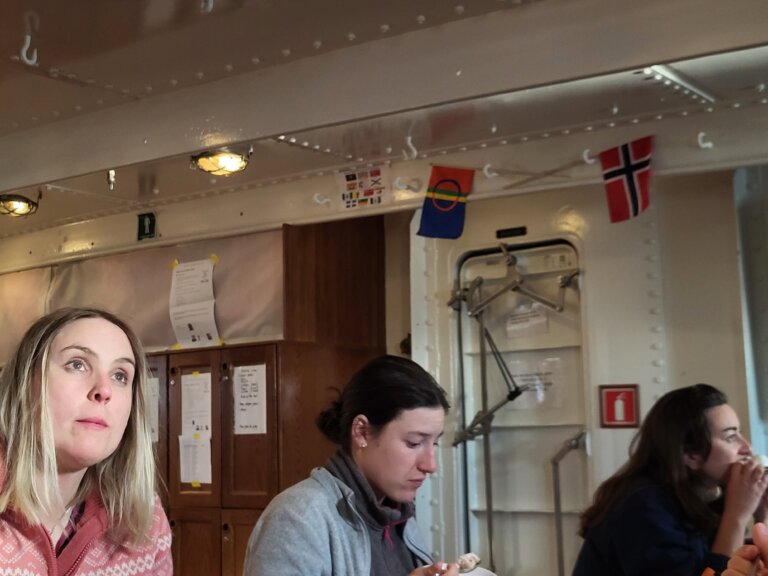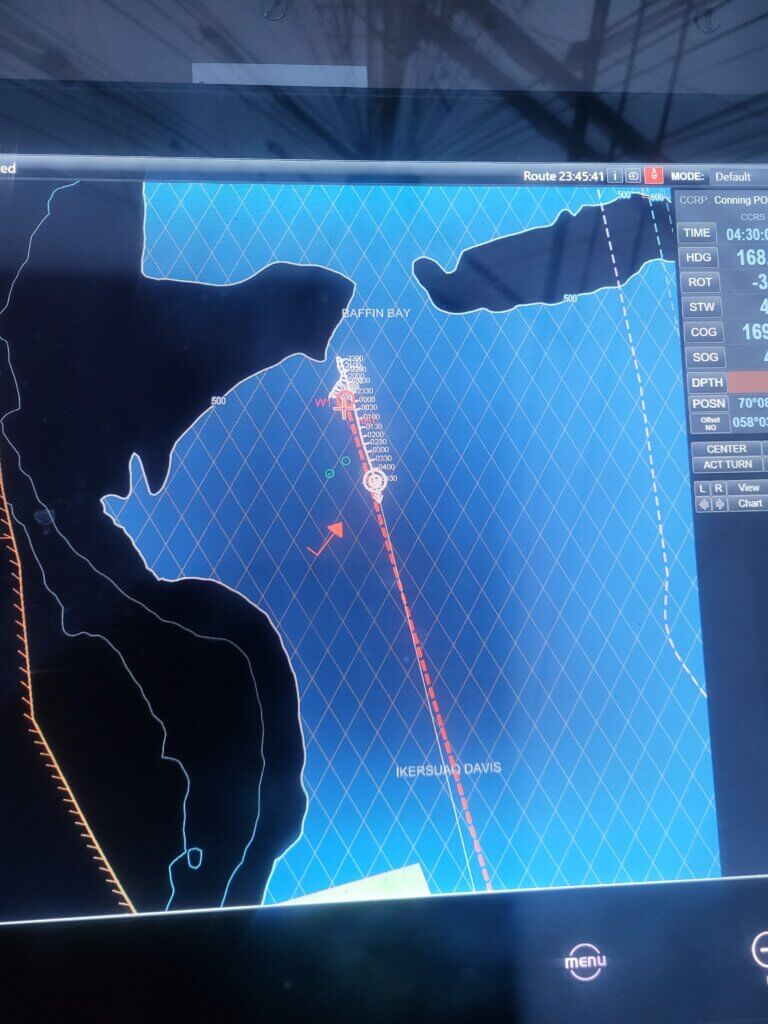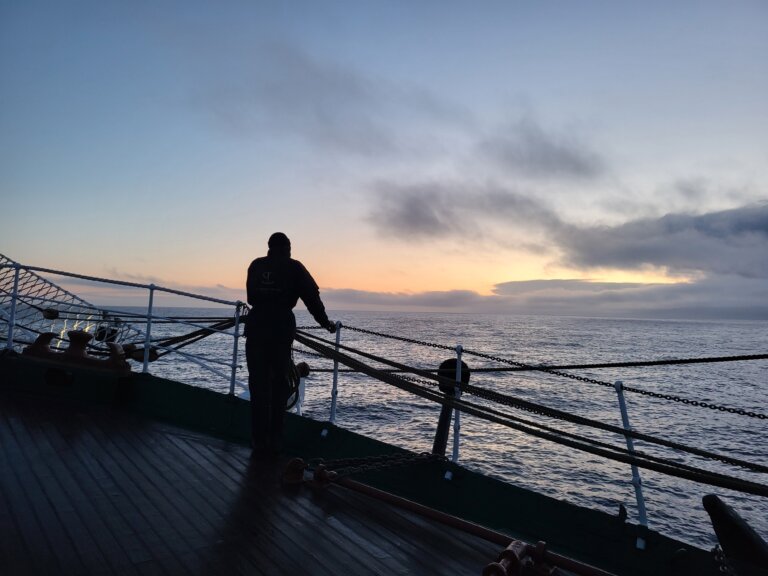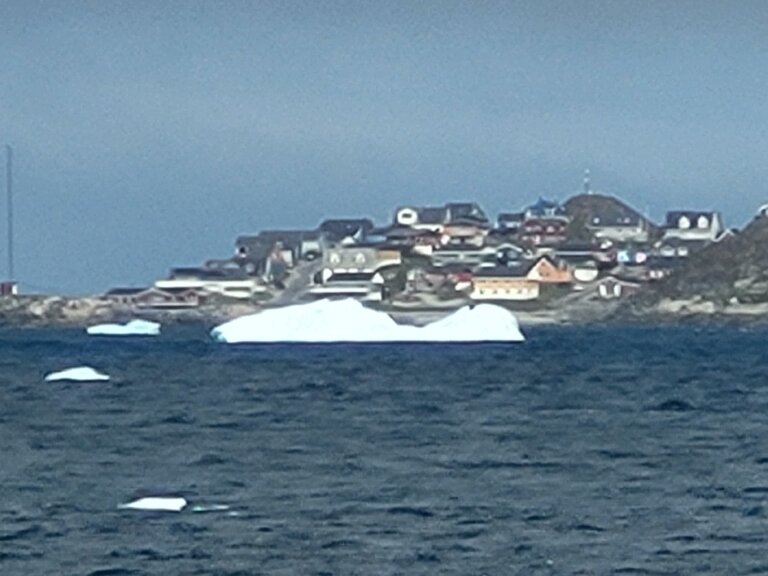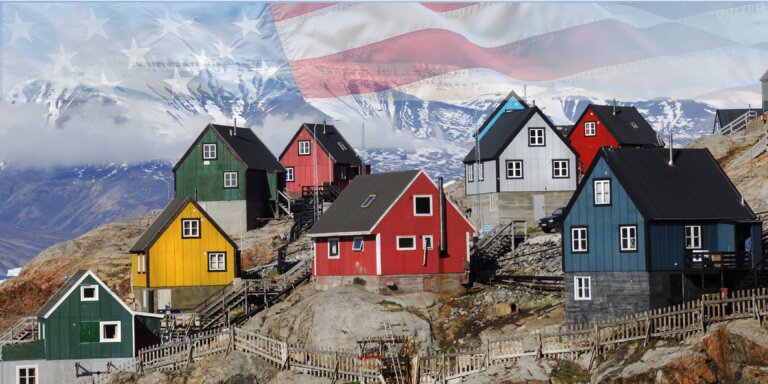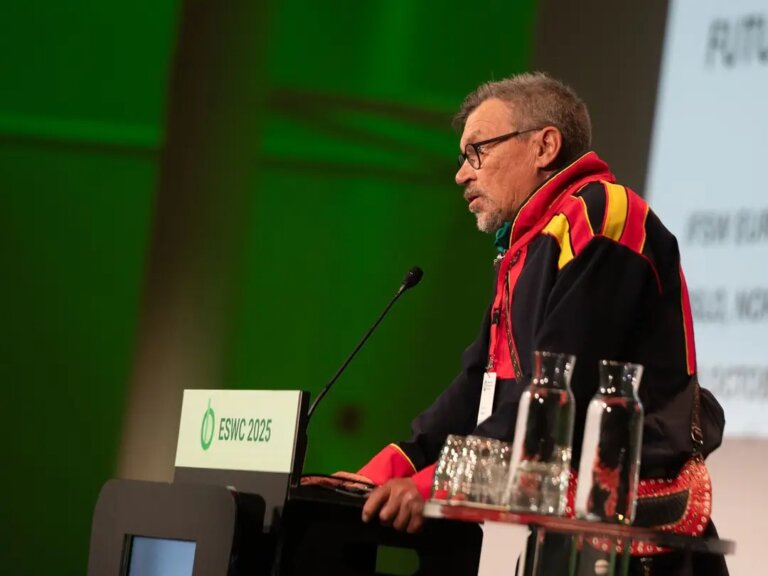As part of the One Ocean II Expedition with the tall ship S/S Statsraad Lehmkuhl, UiT The Arctic University of Norway chartered the vessel to sail through the Northwest Passage in the autumn of 2025. At the heart of this journey was the 10 ECTS interdisciplinary course Arctic Future Pathfinders – A Journey Through the Northwest Passage, designed to develop anticipatory skills among master’s students and doctoral candidates. The course was conducted in English and welcomed participants from UiT as well as designated partner universities.
The first leg was planned from Nuuk, Kalaallit Nunaat/Greenland to Iqaluktuttiaq/Cambridge Bay, Canada. However, due to sea conditions and the presence of icebergs, the route had to be adjusted during the voyage.
A number of berths were reserved for participants from Indigenous and local communities. Indigenous knowledge holders and elders played a central role in the course, contributing to the transmission of diverse perspectives and knowledges about the Arctic. This fostered meaningful cultural exchange and enriched the educational experience for all participants.
Among the lecturers was Jan-Erik Henriksen, who gave a talk on birgejupmi, one of the central themes of the EU-funded BIRGEJUPMI project. Birgejupmi is a key concept in Sámi thinking, which Henriksen has explored in several academic articles. It refers to the capacity to endure and adapt under harsh living conditions, such as those found in Arctic regions. Similar ways of thinking are found in Greenland and among Inuit communities in Nunavut, Canada, where the understanding of birgejupmi—especially in relation to knowledge about snow and ice—is remarkably aligned across Indigenous groups.
During the voyage and his lectures, Henriksen focused on equipping students with tools for navigating complex knowledge systems. One such tool is the two-eye seeing approach, which integrates both scientific research and Indigenous knowledge, fostering deeper reflection and dialogue throughout the journey.
The voyage also served as a unique platform for research, encompassing a wide range of study areas including biodiversity, microplastics, physical oceanography, human health, marine and atmospheric studies, governance, socio-economic dimensions, and Arctic imaginaries.
The course was presented at the UN Ocean Conference in Nice, France, in June 2025, and was linked to the Norwegian national research initiative Arctic Ocean 2050 and the upcoming International Polar Year 2032/33. The students and Indigenous and local youth who participated in the expedition are envisioned as the future Arctic academics and knowledge holders we will rely on for sustainable management of a rapidly changing Arctic. The inter- and transdisciplinary competencies and anticipatory skills developed during the course will be the true legacy of the voyage.

